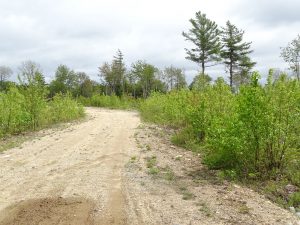Six weeks later, there still has been no word about it. Hopefully the delay means that the McNeil Government really wants to get it right. In the meantime, some suggestions have been forthcoming.
Hilda Guderley who launched the anti-biomass petition in early 2016, writes in Voice of the People (CH, Aug 9, 2017):
Pressure has been building to decrease use of fossil fuels. Initially this led to ill-advised burning of biomass for power generation. The federal Liberal government has increased pressure for policies mitigating climate change. The McNeil government agreed to a cap-and-trade system.
An independent review could examine forestry practices in light of forests’ role in mitigating climate change.
A carbon market can assign value to sequestration of CO2 by forests. Having a monetary value assigned to standing forests (on private or public lands) and trading this value in a carbon market could allow Nova Scotians to be paid for leaving trees standing.
Advantages of standing forests, from tourism to biodiversity to alternative products, could be enjoyed.
The independent review should examine forestry practices in the context of a wider carbon market.
In a wide-ranging interview on the Rick Howe show (Aug 10, 2017 – 11 am segment), EAC’s Wilderness Coordinator Raymond Plourde commented (with some minor editing):
They (referring to former forest industry executives now at NSDNR) will want to make sure the scope of the review is as narrow as possible, but our (EAC) viewpoint is that to be credible, they will need to appoint one or more experts in Forest Ecosystem Dynamics…
It’s good to see that McNeil acknowledged in the election campaign that there is a problem with forestry practices but redoing the Natural Resources Strategy (NRS) is not necessary.. they simply need to force the DNR bureaucracy to actually implement the NRS as promised:
– Bring in an annual allowable cut or a cap on how much can be cut in a year be it on private or Crown lands, a total allowable annual cut.
– Reduce clearcutting to no more than 50%.
– Stop spraying glyphosate.
– Bring in a rule to limit whole tree harvesting as they promised to do (but haven’t because they have been promoting biomass as a replacement for the declining pulp and paper sector).It was unrealistic to expect that you could get some quality experts working on it in a matter of months… I think the first place the expert or experts will need to start is to review all of the documentation of the NRS, otherwise we will just start all over again and it will not be credible.
Update: View Ecology Action Centre skeptical of forestry review (CH, Aug 18, 2017)
and Don’t make forestry review a nod to industry, ecology group says (CBC, Aug 18, 2017)
Then there is the Margaree Environmental Association’s 8-step plan to transition from clearcutting to a selection cutting forest economy.
In the meantime, also, Warden Timothy Habinski and the Annapolis County Council are doing their research to come up with alternatives to the same old same old and are questioning the lack of power to make forestry related decisions at the municipal level (view post, June 23, 2017).
In the meantime, also, the Conservation Committee of the Halifax Field Naturalists awaits the promised reply to their questions about the science of sustainable forestry in Nova Scotia.
In the meantime, also, Nova Scotians getting out and about are expressing more dismay about particular clearcuts, e.g. on the eastern shore, and there are more clearcut refugees.
In the meantime, also, we wait for the long promised Forest Nutrient Budget Model to be implemented to evaluate sustainability of harvesting, especially on the very poor soils that cover 60% or more of the province.
In the meantime, Forest Nova Scotia offers some comforting words:
– We are committed to growing and maintaining healthy forests for you and your family.
– The tools we design and use (drones, computer programs, machinery) are high-tech, complex and modern.
– [There are] More forests in NS now than 100 years ago despite 2X the population.
– Forests grow back. It will continually renew itself, especially if we take care of it.
There will be lots to munch on when the experts are finally hired and get to work!

